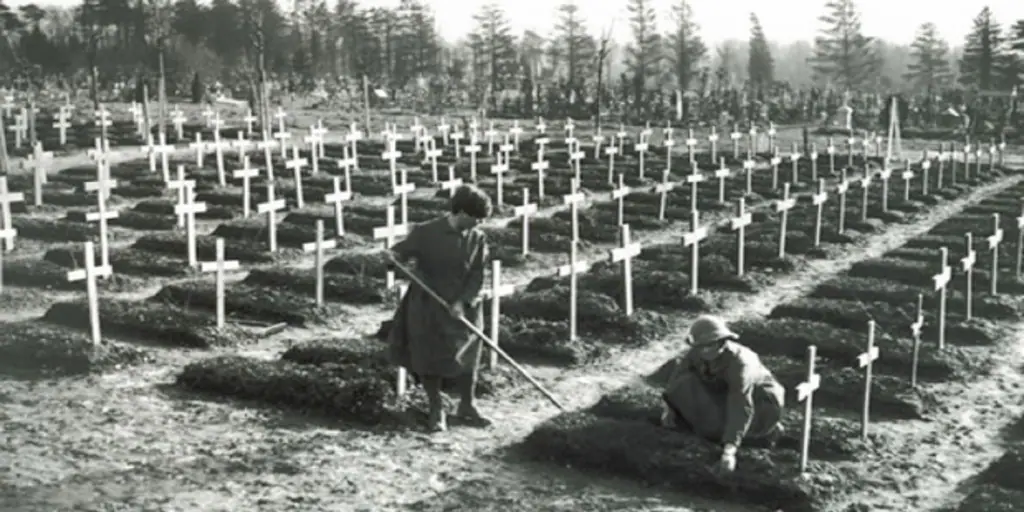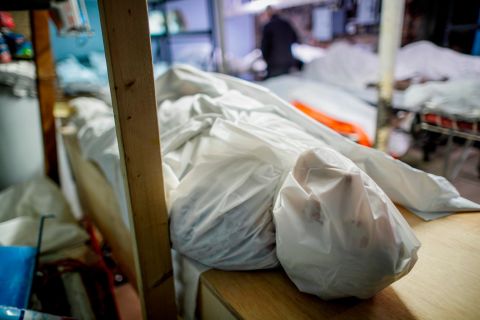“The number of deaths was estimated to be at least 50 million worldwide with about 675,000 occurring in the United States.”
cdc.gov
The Spanish Flu, which is also known as the 1918 Flu, played a major role for about two years. Killing millions of innocent people who simply did not see this tragic situation coming. This pandemic originated in the U.S and made a huge impact on the U.S citizens. The impact that this flu had on the United States was something that can never be forgotten. Marriages were not held or done normally, and the death tolls were at an all time high rate.
As we all know, the amount of people that died from this tragic flu is unforgettable. Funeral homes were being overwhelmed with clients who needed to bury their loved ones. The idea of cremation was not popular at the time, so some funeral homes were forced to cover the deceased”with ice to stave off decomposition until burial could take place.” (Ionescu 2020) While storing the deceased with ice waiting upon their burial, cemeteries soon ran out of space to bury them. In addition to not having space in the cemeteries, gravediggers were not coming into work in fear of this virus.
“Cities called in their employees, inmates, and sometimes the families of the deceased to dig the graves.”
(Ionescu 2020)
With the amount of deaths that were occurring, nobody wanted to risk their lives to bury a deceased person. Gravediggers were so low in staff that inmates from different prisons were being hired to bury the dead.

https://www.abc.es/historia/abci-colosal-imposible-batalla-estados-unidos-enterrar-muertos-gripe-espanola-1918-202003050111_noticia.html
Families who lost a loved one suffered nothing but heartaches as well as devastation. Funerals were no easier than burials during this pandemic. Due to the virus, families were not able to arrange public funerals. Public funerals were not held in fear of the virus expanding due to people gathering around each other. Being that public funerals were not allowed, families could not grieve accordingly. Although these families were not able to grieve properly for their deceased loved ones, some would consider them lucky compared to other families who were less fortunate. Some families who were not as fortunate as others were forced to bury their loved ones without caskets.
“Desperate families resorted to burying children in cardboard macaroni boxes.”
(Ionescu 2020)
Fast forward to what is occurring now with COVID19, you can see that there are a lot of similarities and differences when you compare the two pandemics. The amount of deaths that COVID has caused is indescribable, just like the 1918 flu. There were over 1 million COVID deaths and about 65 million COVID cases. What makes things even worse is families who lost their loved ones could not arrange a funeral due to the no gathering rules. Without a funeral ceremony, families were forced to remember their loved ones based off memories.
“To not say goodbye to loved ones, to not have loved ones attend funeral services, or to not even find a permanent resting place for a loved one is changing how people grieve.”
(lehmann 2020)
These were challenges that people had to go through due to COVID. With the death rate rising as well, funeral homes became busier than ever. Due to the COVID, some funeral homes were forced to place most of the deceased into temporary morgues. In addition to placing the deceased into temporary morgues, funeral homes were forced to deny service to families who lost their loved ones. Just as in 1918, funeral homes ran out of room to keep the deceased. Funeral service could not be arranged, due to not having space and to people having to stay home due to the virus. The similarities between COVID and the 1918 flu definitely outweighs the differences

https://www.news4jax.com/news/world/2020/04/04/the-week-that-was-stories-from-the-coronavirus-saga/
The 1918 flu made it hard for everybody to live a normal life. The amount of normalcy in every society during this time was extremely low due to this flu. It affected every social practice that was normally done in the U.S. Being that large gatherings were not allowed, this affected how weddings were normally done. To combat this rule, some weddings were held at cemeteries. These types of weddings were known as plague weddings or black weddings. Although this was known as a wedding, the purpose of this wedding was different than a traditional wedding. The purpose of a black wedding had more to do with “preventing illness than celebrating a holy union.”
“in the Jewish tradition, weddings bring people closer to God. Even accessories associated with the ceremony were believed to hold spiritual properties.”
(Debczak 2020)
For the jewish community, black weddings were looked at as a way of fighting off the flu. The reasoning behind this theory is due to the jewish community having the belief that getting married at a cemetery brings them closer to god.
“such a dreadful setting would provoke pity from God, who would then show mercy by ending the pandemic.”
(Debczak 2020)
Black weddings were also mainly arranged by the jewish communities, meaning that the bride and groom were also chosen by the jewish community. The jewish community would pick certain people that were “poor, orphaned, or disabled” (Debczak 2020). They would pick these type of people because they looked at it as a charity, hoping that god will favor them. Due to this flu, weddings like this were being held.
As a whole, the 1918 flu had significant effects. It changed the society as a whole along with the social practices that are normally done. Families did not have places to bury their loved ones or could not arrange a funeral for their loved ones. Marriages were being held differently due to this flu as well. The social practices that was normally done was affected in a big way.
Works Cited
- Ionescu, Diana. (2020). Funerals During the 1918 Flu Pandemic https://connectingdirectors.com/56600-funerals-during-the-1918-flu-pandemic#:~:text=Cemeteries%20running%20out%20of%20space,maintain%20a%20sense%20of%20normalcy.
- Debczak, Michele. (2020). When people held ‘Plague Weddings’ in Cemeteries to Try to ward off Disease. https://www.mentalfloss.com/article/623350/history-of-plague-weddings-to-fight-disease
- Romero, J. (2017). All the city was dying. Econ Focus, 22(2), 30-33. Retrieved from http://unh-proxy01.newhaven.edu:2048/login?url=https://www-proquest-com.unh-proxy01.newhaven.edu/docview/1942157437?accountid=8117
- https://www.cdc.gov/flu/pandemic-resources/1918-commemoration/1918-pandemic-history.htm
- Lehmann, Christine. (2020). COVID 19 Changes Funeral and How families Grieve. https://www.webmd.com/lung/news/20200420/covid-19-changes-funerals-and-how-families-grieve



